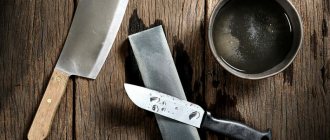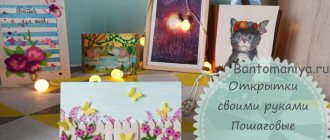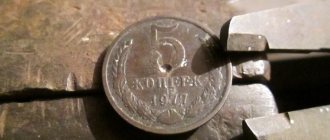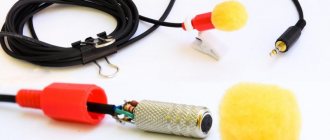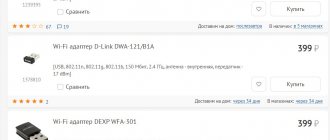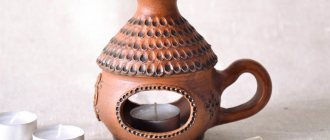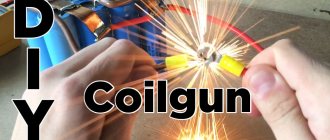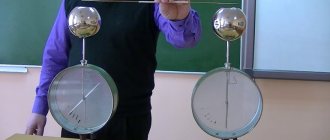On graph paper, the pattern is given for size 37-38 of two main parts. The dimensions of the remaining parts are in the description here.
This is what the pattern itself looks like:
Foot-sole, toe-heel part, circle - flower (with a bead in the center) for decoration. The elongated part is the bunny ear for the “Bunny” slippers.
Attention! This same circle is also a bunny tail, if someone wants to sew “Bunny” slippers, the basic pattern is the same.
Construction of the pattern:
1. Sole.
We take a sheet of paper, put it on the floor, stand with our feet and trace our foot :) We trace along the edge, keeping the pencil straight, perpendicular to the surface, no need to bend it under the foot. We add about 1.5-2 cm to the length, you can outline autumn shoes without heels, shoes are best, then without adding centimeters. The length from the center of the toe to the center of the heel for sizes 37-38 should be 25.5-26 cm, for sizes 38-39 approximately 26.5 cm. Check these dimensions in accordance with your foot and shoes. We build a template for the sole, focusing on the photo, level it, round it, etc.
An increase in centimeters is needed, because we will insert padding polyester (or other insulating material), and it “takes up” no less than a whole size, plus the leg needs some freedom.
2. Toe-heel part
. The length from the center of the sock up the leg to the shaft (the center of the front of the detail) is equal for all sizes from approximately 12.5 to 14.5 cm, as desired!! The height from the center of the heel to the boot is 6.5 - 7 cm. Next, we measure our sole (foot) pattern around the perimeter, divide by two (at the same time we make guide marks for the center of the heel and toe on the sole itself - this will be very useful when assembling parts) and add Approximately 1-1.5 cm for the fit of the sock and a slight fit at the heel. The resulting length should be equal to the bottom line (where we sew it to the sole), line up the bottom line approximately as in the photo. The top line is 16-17 cm.
3. Circle for a flower or tail
Mine are 9-10 cm in diameter. The ears are optional in length and width, I make them 4x14 cm.
And this is a pattern of the main parts on graph paper for size 37-38. Up to size 39 or 36 is quite easy to adjust. Keep in mind that when changing the size, the pattern changes more in length and less in width, that is, not proportionally.
Now about the number of parts for the “Snow White” model; it is sewn from fleece of the same color
Sole
— 4 parts made of fleece, 2 parts made of raincoat fabric, 2 parts made of synthetic padding (or other insulation but not hard and not very thick, for example thin batting)
As an option: instead of raincoat fabric and padding polyester, you can use ready-made quilted jacket fabric, artificial leather (not thick, soft)
Heel-toe part
— 4 parts made of fleece, 2 parts made of padding polyester
Bootleg
— rectangle 18*32 — 4 fleece pieces
Note
. 32 cm - width and does not change
18 cm - height and varies at will (and the shape of the top may not necessarily be straight either, use your imagination)
Flower
— circle with a diameter of 9 -10 cm, 6 fleece parts
This is roughly what it all looks like after cutting, don’t forget to mark the centers and other points of the parts for assembling the boots in the future:
We begin assembling parts
When assembling, we combine the designated points - the centers of the parts with the corresponding marks of another part
First, we connect the upper toe-heel part with padding polyester (insulation) and fasten it with a machine stitch along the edges. Then we assemble the sole like a puff pastry simply :) I fasten the sole by hand over the edge, making sure that nothing gets warped. You can do this on a machine, but then leave a little more in the allowances to even it out, trim off the excess, if you can’t sew it evenly, there are still a lot of layers and they are voluminous. Parts with padding polyester are lightly steamed through a damp cloth, lightly!! We crush the synthetic winterizer with an iron.
Then, as in the photo, we connect the toe-heel parts with the boot, you get 4 connected parts. Then we sew the back seams, leaving small sections unsewn in the lining, see photo, through which we will turn our boots inside out. And after that we sew the soles into all 4 parts.
We turn the upper part of the boot to the right side, leaving the inner part - the lining - on the left side. Just like in a puppet theater, we put the top, front boot on our hand and insert it into the lining, matching toe to toe, heel to heel, accordingly. We also combine the upper sections starting from the back seam, chop them off and sew them together.
Through the left, unsewn sections of the lining, we turn it inside out, pull it out from the inside, align it, stretch all the seams, and sew the open unsewn area in the lining edgewise.
Now we insert the lining inside, align everything, put it directly on the leg, pull and pull wherever necessary :). From the inside, I make four thread fastenings on the upper part of the boot with the lining so that the lining does not fidget :))
2 fasteners in the sock: at the center of the toe and at the boot, and two fasten on the heel, where the back seam connects with the sole and boot.
All!!! Next is your will: flowers, beads, in the center, along the cuff (bend it if you want) on top, etc. In this model “Snow White” there are three flowers in the center; you mark the center directly by putting the boots on your feet. When sewing on flowers, under each flower I make a tuck of 1.-1.5 cm, which results in an easy gathering in front.
The flowers are assembled very simply: you gather them in a circle with a needle and thread, and pull them together. Pull the needle through the center and over the edge (from the center around the flower and again into the center, pierce the needle and pull the thread to form petals. This must be done 4 times to get 4 petals. Sew a bead into the middle.
This model fits more closely to the foot. But the sequence of assembly of parts and the sewing technology are the same. The other is just a pattern. I give it to you in size 38-39 on graph paper. Changing the pattern according to the same principle as with the Snow White slippers (see above). Here in the toe part you need to use a very thin padding polyester or other thin insulation.
From the same pattern, lengthening it to about 50 cm (from the floor) and widening the top (at the top 1/2 of the top is about 23 cm), you can make house boots. The length and width of the boot varies according to your wishes. The sewing technology is the same as described above. The boot is assembled by gathering on 4 transverse elastic bands, the elastic bands are sewn at approximately the same distance from each other, the distance depends on the length of the boot. The distance from the last (or first) elastic to the upper edge of the boot is 4 cm.
My boots are made of thin fleece; thinner fabric is generally suitable for such boots, but they will look better made of velor.
Shoes with the unusual name chuni are of original Russian origin. Previously, this was the name given to bast shoes woven from hemp. Nowadays this word refers to high warm slippers for the home made of felt, leather or fur.
We create chuni ourselves
Warm chuni can be purchased in many stores or you can make them yourself. There are 2 options for making chuni with your own hands : sew them from faux or natural fur, or knit them with crochet or knitting needles.
In order to sew yourself comfortable house shoes, you should find a suitable material for this. Excellent chuni come from an old sheepskin coat, fur coat or coat. Real fur is better suited because... In boots made of artificial material, your feet will not feel as comfortable. To make it comfortable for you, it is better to create an individual pattern for each leg. To do this, outline your feet with a pencil, marker or pen on a piece of cardboard. This pattern will allow you to take into account the characteristics of your legs and make the chuni as comfortable as possible. The pattern of the upper part of such shoes is simple. There are many different variations of them.
You can knit chuni with crochet or knitting needles. In this case, we also recommend that you use yarn made from natural fibers. You can knit with columns or openwork knitting, with a variety of patterns and weaves of threads. It's a matter of taste and your imagination.
Finishing the job
If there is leather, all sections of the buroks can be treated with it by sewing it on. The upper part of the shoe is covered with trim, fur or leather. Now it’s time to try on the burkas.
If you have galoshes, you should wear burkas with them. Then you will not only not freeze, but also not get your feet wet. We hope that our master class will help you. You can decorate your shoes as you wish.
Source
How to sew a chuni: a simple pattern
To make chuni, prepare a piece of felt or sheepskin, scissors, a pencil, a measuring tape, a needle with a wide eye and thick threads.
- Measure the width and length of your foot. Determine how tall the chuni will be and create a pattern according to your size.
- Transfer your pattern onto the fabric, adding a centimeter at a time to the seams, and carefully cut out all the details. Remember that the fur must be inside. For the sole, use leather or a leather substitute. Chuni does not have a division into left and right, but if you need it, you can make small protrusions during cutting where the big toes are located separately for each boot.
- Carefully sew all the parts together. If the material is dense, you can sew by hand using decorative stitches.
- If you want the chuni to fit as tightly as possible on your leg, make the lacing at the ankle joint.
Step-by-step creation of a pattern for fur slippers and sewing them with your own hands
During the cold season, walking in socks on icy floors is not only uncomfortable, but also fraught with colds. Factory products solve this problem only partially, without creating the necessary amenities. The way out of the situation will be to pattern fur slippers and make them yourself. Hand-sewn shoes look beautiful, keep your feet warm, are environmentally friendly and durable. You can make slippers from fur for all family members, regardless of their age.
How to sew a chuni from an old quilted coat
- Homemade warm chuni can be sewn from an old quilted coat or jacket. Cut out boot parts from unnecessary items.
- The side of each cell is 5 cm for sizes 34-35, 5.5 cm for sizes 36-37, etc.
- Sew the details of the boot with strong threads (you can even use large stitches along the front side over the edge). Sew a heel pad made of thick fabric to the additional insole and place it in the boot.
- To make chuni quilted, you should cut out each piece twice, then spread the wool between them, pin them together and stitch them on a sewing machine, making squares. Absolutely any wool is good for quilting.
Booties are essentially baby chunnies. Give your baby an original gift, sew him warm house boots yourself. Constructing a pattern for baby booties is no different from adult ones, except that tracing a baby’s foot on paper will be much more difficult.
Decoration and decor are the main thing that must be in children's chuns.
A child will really like it if his little house boots have multi-colored pompoms, funny appliqués in the form of animals or bright bows.
- To make a pompom, prepare a template. To do this, draw a circle on cardboard (its size is equal to the desired size of the pompom).
- Draw a small circle in the middle of the large circle. The degree of splendor of the future pompom will depend on its diameter. The larger the second circle you get, the denser the pompom will be.
- For 1 pompom you need 2 identical templates. Cut them out. Connect the 2 templates together and wrap them with thread. Then cut all the threads along the end of your template.
- Pass the thread between the 2 templates and tie tightly. Fluff the pompom and trim.
We are used to buying shoes in a store, or having them made to order. But there are special “cozy” shoes that you sew yourself. You can easily make new items such as slippers, chuni, sock boots and burkas (high or short for home use). A variety of materials and colors can be selected to suit your taste.
Burkas are winter shoes made of felt, felt or suede.
They are indispensable in cold climates.
The lower part - the toe, vamp, heel, as well as the lining along the boot - are often made of leather.
The sole is traditionally rubber or leather.
Reference!
For the first time, mass production of burkas was opened in Tsarist Russia at the end of the 19th century.
During the early USSR, burkas were part of the uniform of senior officers of the Soviet Army.
Fry on a dry grill pan on each side until black under foil
I know only one thing for sure: if people loved each other more, our lives would become much better.
interview with Afrikantova
The whole truth is in an interview with Marina Afrikantova.
Do you want to know the whole truth about Marina’s chubby cheeks?! How to turn into a stonker in a matter of days, how to hide your weight from others, how to remove fat from the sides and much more.
An article for those who have definitely decided to lose excess weight forever, for those who are purposeful and responsible.
We sew slippers and footwear. We restore old slippers.
I HAVE BEEN LOOKING FOR A LONG TIME HOW TO SEW A BURKA FOR MY MOTHER. THIS IS WHAT I FOUND IN THE COUNTRY OF MASTERS, MAYBE SOMEONE ELSE WILL NEED IT
Here are my 3 pairs of warm slippers. I started a couple more and haven’t sewn them yet so I took a photo of blue slippers without a pair.
LET'S SEW SUCH WARM SLIPS.
I sewed this pair of slippers quickly! Because... I've already gotten used to my first slippers.
Pattern on paper. My size is 36-37.
Details for slippers:
The sole consists of 4 layers:
The upper part of the slippers is cut from pink children's pants - thick, brushed fabric - 2 children.
Lining - cut from woolen sweater - 2 children.
The tongue is also made of 2 parts - upper and lower - quilted.
Then I prepared the sole: quilted 2 parts, attached part No. 3. I stitched them to the upper part along with bias tape - 5 cm wide, which covers the edges of these parts. I bend the edges of the strip down and attach it to the fabric with sparse stitches.
The last thing is to sew the skin down. I trimmed it with a ribbon around the tongue.
And I prepared to sew another pair of warm slippers. I only trimmed them at the top with new faux fur.
Well, VERY warm slippers, and most importantly, comfortable!
We are restoring warm slippers. The same thing here - the sole consists of 4 parts.
The first 2 parts are quilted
3rd detail - warm, brushed fabric (red).
Materials and tools
Traditionally for the outside they are used:
- felt;
- drape;
- sheepskin;
- suede leather;
- felt;
- overcoat cloth;
- thick denim fabric;
- chunky knitwear.
As insulation and filler:
- batting, pharmaceutical cotton wool;
- felt;
- padding polyester, holofiber.
Advice!
If you use sheepskin, then there is no need for insulation; it is enough to cut out the parts from the skin with the fur inside.
We will need:
- Main material. You can use an old coat or sheepskin coat that has gone out of use.
- Finished rubber sole. You can buy slippers and cut off the soles. For an indoor version, felt from old thick felt boots is perfect. It is also permissible to place a piece of thick leather or rubber on the sole of the cloak.
- Bias tape or grosgrain tape for edging edges. Knitted strips 3 cm wide are perfect.
- Dense material for the insole, or a ready-made insole. The ideal option is sheepskin.
- Filling: padding polyester, batting, old coat. If you want to sew a warm option for a cold winter, then make double burkas with insulation.
Advice!
The inner layer of the buroks can be made removable by sewing thin liners one pattern at a time. For convenience, sew Velcro tape onto the liners and main parts.
- Strong threads, preferably nylon.
- Velcro tape (Velcro) connects the burkas to the liner.
The material used is traditionally light: white, beige, gray, coffee. Children's ones come in bright colors.
Necessary tools and equipment:
- tailor's (furrier's) knife;
- ruler;
- tape measure;
- shoe or rubber glue.
What to prepare
How to sew burkas with your own hands? This will be quite easy to do. Burkas can be sewn from any thick fabric. You can use an old raincoat or drape coat. A sweatshirt will also work.
The best option would be felt or felt. The sole is recommended to be made of leather. You will also need a pattern - it should be drawn on paper according to your dimensions. Then they simply cut it out.
Taking measurements
To create a pattern we will need the following measurements:
- Foot length.
- Foot width. We measure along the contour of the foot outlined on paper. If you are not using a ready-made sole, it is better to take several measurements. If you have special features of the foot – a protruding bone, a non-standard shape.
- Boot height. Determined from the floor level to the expected height of the product.
- Foot circumference. There are several options, if you need the most comfortable boots, then we use all three measurements. It is also advisable to measure at what distance from each other you laid the measuring tape.
Sewing order
First you need to attach the blanks to each other to make sure that they fit together exactly . If necessary, additional adjustments need to be made. To prevent the parts from coming apart during stitching, they need to be securely fixed - for this you can use office clips or thread tacking every 4-5 cm.
Sewing fur slippers with your own hands is carried out in the following sequence:
- Connecting the tops (backs) with the socks. First, a joining seam is made between the blanks, then the edges of the back part are connected. Depending on the project, the seam can be applied from both the fur and the flesh side. To avoid chafing the foot, the choice is made in favor of an external seam.
- The connection between the sole and the upper of the shoe. Here it is advisable to stitch along the inside, creating an external seam. After stitching, the excess on the sides is carefully cut off at the level of the sole.
- Trimming of external seams. It is made using braid, cord or decorative braids. Genuine leather can be glued onto the sole.
The final touch is to make the top folds. If necessary, decorative finishing of the product is carried out with glitter, beads, stickers or paints.
Patterns
Model 1 - the simplest stocking-type burka-boots
They consist of only three parts, the left and right halves of the boots, as well as the sole. They are cut out freely, since there is no separate front part.
To create a similar pattern, you can use a large wool sock:
- Circle it and compare it with the dimensions obtained from measurements. The most important thing here is not to make the workpiece very small.
- To pattern the sole, outline the foot on a piece of paper, add 1-2 cm for a loose fit.
- If you are making double insulated burkas, then the pattern of the liner should be slightly, 0.5 cm, smaller in all respects than the pattern of the main product.
- When cutting the left and right halves, as well as the sole, do not forget to make these parts mirrored.
- The sole can also be made multi-layered, with insulation.
- In this model, we make the sole from the main material, which can be duplicated with ready-made rubber if desired.
Cutting with scissors
Progress:
- We place the parts on the fabric, chalk it, if we cut it from fabric, then do not forget about the seam allowances.
Important!
We do not allow seam allowances for items made from sheepskin, other fur, or natural leather.
- Cut with scissors or a knife.
- Similarly, we cut out parts from insulation and lining material.
- We fold the blanks face to face and secure them with pins.
- We stitch it.
- Apply and secure the sole with pins.
- Sew on the sole.
- We turn the bootleg outward, that is, on the wrong side in our case.
- We sew the bend.
- Turn it inside out.
- We glue or sew on an additional rough sole.
- We decorate.
- Let's try it on.
Short burkas with insulation
Let's start sewing
- First, remove the lining from the coat.
- Then the required parts are cut out from the lower part according to the pattern.
- It is better to cut on fabric folded in half.
- After you have traced the pattern, you should make seam allowances - about 1 cm.
- The central part of the burka can be made from a long strip - it can be solid or sewn from several pieces.
- The lining of the buroks is sewn from batting and fabric. It is better if the lining is fastened. The lining should be 2 cm larger than the pattern of the cloaks themselves.
- You need to fold the parts like this - lining, batting and main fabric.
- We pin the parts together and sew them together by hand.
- Then we sew the burkas on a machine.
- The most convenient way to sharpen shoes is with a ruler foot.
- The excess lining is simply trimmed off.
- It is better to stitch a piece of leather onto the heel.
- We sew the side parts to the central one.
- We iron all seams.
- Now you should cover all the seams with fabric so that they do not rub your feet.

